Top Benefits of Flexible Window Screens
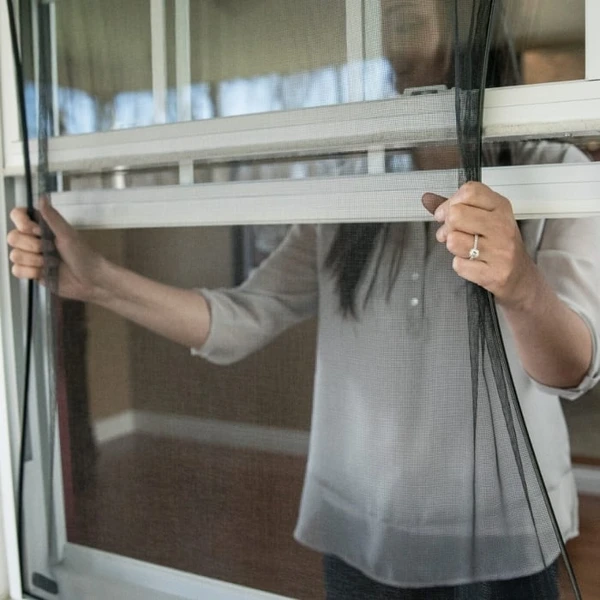
When upgrading or replacing windows, homeowners often prioritize energy efficiency, durability, and aesthetics. However, choosing the right window screens is equally important for maximizing comfort and functionality. Flexible window screens have emerged as a top choice, offering a perfect balance of innovation and practicality. Below, we explore the top benefits of flexible window screens and why they’re a game-changer for modern homes. 1. Effortless Installation and Maintenance Flexible window screens are designed with convenience in mind. Their lightweight, adaptable structure ensures quick and easy installation. This user-friendly design saves time and effort, making them a preferred option for busy homeowners. 2. Perfect for All Window Styles Unlike traditional rigid screens, flexible window screens are versatile and can fit almost any window type, including: Their adaptability ensures a snug and secure fit, offering uniform protection and style for every window in your home. 3. Enhanced Durability and Longevity Flexible window screens are constructed with high-quality materials such as polyester or fiberglass, making them resistant to wear and tear. This durability translates to fewer replacements and repairs, providing long-term value for homeowners. 4. Superior Aesthetic Appeal Flexible screens blend seamlessly into your home’s architecture, enhancing the overall aesthetic. These features ensure that your windows remain functional without compromising your home’s curb appeal. 5. Improved Airflow and Pest Protection One of the primary benefits of window screens is to allow fresh air into your home while keeping pests out. Flexible window screens take this a step further by providing: This dual functionality creates a healthier and more comfortable living space. 6. Energy Efficiency and Climate Control Flexible window screens can help regulate indoor temperatures and reduce energy consumption. By reducing reliance on HVAC systems, flexible screens contribute to lower energy bills and a more sustainable home. 7. Space-Saving Storage When not in use, flexible screens are incredibly easy to store. Unlike rigid screens, they can be rolled or folded, taking up minimal space in storage areas. 8. Eco-Friendly Choice For eco-conscious homeowners, flexible window screens are an excellent option. 9. Added Security and Safety Modern flexible window screens often include features to enhance security and safety. These benefits provide peace of mind for families and pet owners alike. 10. Cost-Effective Investment While flexible window screens may have a slightly higher upfront cost than traditional screens, their numerous advantages make them a cost-effective choice in the long run. By enhancing comfort and functionality, these screens offer excellent value for your investment. Why Choose Flexible Window Screens for Your Home? Flexible window screens are the perfect combination of modern technology and practical design. They provide superior durability, improved energy efficiency, and unmatched convenience, making them an ideal choice for any homeowner looking to upgrade their windows. At Will County Siding & Windows, we specialize in high-quality window solutions tailored to your needs. Whether you’re replacing outdated screens or renovating your entire window system, flexible window screens are a smart, forward-thinking choice.
5 Alternative Applications of a Garden Window

Garden windows are a delightful addition to any home, traditionally used to grow plants or herbs. However, their unique design—a protruding structure that extends outside—makes them incredibly versatile. Beyond greenery, garden windows can transform spaces with creative uses. Here are five alternative applications of a garden window to inspire your next home improvement project. 1. Mini Home Office Nook If you work from home or need a dedicated space for creative thinking, a garden window can be the perfect solution. By adding a slim desk or built-in shelving below the window, you can turn the area into a light-filled workstation. Natural light enhances productivity and boosts mood, making your new mini-office both functional and enjoyable. 2. A Cozy Reading Corner Transform your garden window into a cozy reading nook. Add a bench with plush cushions directly below the window, along with a small side table for your books or a cup of tea. The window’s natural light and expansive view create the ideal ambiance for getting lost in your favorite novels. 3. Display Space for Collectibles Garden windows are great for showcasing prized possessions like collectibles, glass figurines, or heirlooms. The glass structure allows natural light to highlight your items, creating a mini gallery effect. To keep your display clutter-free, consider adding adjustable glass shelves within the window for an elevated look. 4. Pet Relaxation Zone Your pets will love the view and sunlight provided by a garden window! Set up a small cushion or pet bed at the base to create a cozy relaxation spot for your furry friends. Cats, in particular, will enjoy the elevated perch for birdwatching, while dogs can bask in the warmth of the sun. 5. Unique Coffee or Tea Station Turn your garden window into a stylish coffee or tea station. Install a floating shelf or small cabinet below the window for storing your coffee maker, mugs, and accessories. The ample light adds a welcoming charm to your morning routine, making it the perfect place to start your day. Final Thoughts A garden window is far more than a place for plants—it’s a versatile feature that can enhance your home in unexpected ways. Whether you’re seeking functionality, style, or comfort, these alternative uses for garden windows can add value and uniqueness to your space. If you’re considering adding a garden window to your home or want advice on installation, Will County Siding and Windows can help. Contact us today to explore your options and bring your vision to life!
Tips for Fixing Drafty Windows
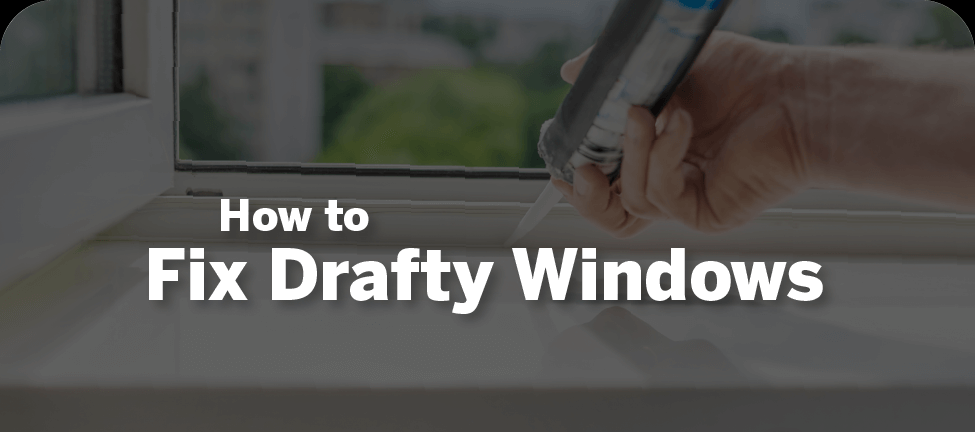
Drafty windows can be a significant problem, especially during colder months. Not only do they make your home uncomfortable, but they can also lead to higher energy bills. Luckily, there are several effective ways to address this issue. Here are some tips to help you fix drafty windows and create a cozier, more energy-efficient home. 1. Identify the Source of the Draft Before you can fix the problem, you need to pinpoint its source. Common culprits include: Use a candle or incense stick near the window edges to detect drafts. You’ve found a leak if the flame flickers or the smoke moves. 2. Seal Gaps with Caulk Applying caulk is an easy and cost-effective solution for gaps around the window frame. Choose a high-quality caulk designed for windows and doors, and follow these steps: 3. Install or Replace Weatherstripping Weatherstripping is essential for sealing movable parts of windows, such as sashes. If your weatherstripping is worn or damaged, replace it with new material. Options include adhesive foam tape, V-strip, or rubber gasket seals. 4. Use Window Film Window insulation film is a temporary solution that can significantly reduce drafts. This transparent plastic film is applied to the interior of windows using double-sided tape and a hairdryer. It creates an insulating barrier, reducing heat loss and preventing drafts. 5. Add Heavy Curtains or Drapes Thick, thermal curtains can help block drafts and keep your home warm. Look for curtains with thermal linings, which provide an extra layer of insulation. 6. Apply Foam or Rubber Sealant For larger gaps or cracks, consider foam sealant or rubber strips. These materials are durable and provide excellent insulation. Cut them to size and fit them into gaps around the window frame. 7. Repair or Replace Damaged Glass If your window glass is cracked or broken, it’s essential to repair or replace it promptly. Small cracks can sometimes be sealed with clear nail polish or epoxy, but replacing the pane is often the best solution for larger damage. 8. Upgrade to Energy-Efficient Windows If your windows are old and beyond repair, it might be time to consider upgrading to energy-efficient models. Double or triple-pane windows with Low-E coatings provide superior insulation and can significantly reduce energy costs. 9. Hire a Professional If DIY solutions don’t work or the drafts persist, it’s time to call in the experts. A professional window contractor can assess the problem and recommend the best course of action, whether it’s repairing or replacing your windows. Final Thoughts Fixing drafty windows is an investment in your home’s comfort and energy efficiency. Whether you choose a quick DIY fix or a professional upgrade, addressing the issue will help you save money on heating and cooling bills while keeping your home cozy all year round. For expert window repair and replacement services, contact Will County Siding and Windows today!
How New Windows Can Help You Save Energy and Lower Bills?
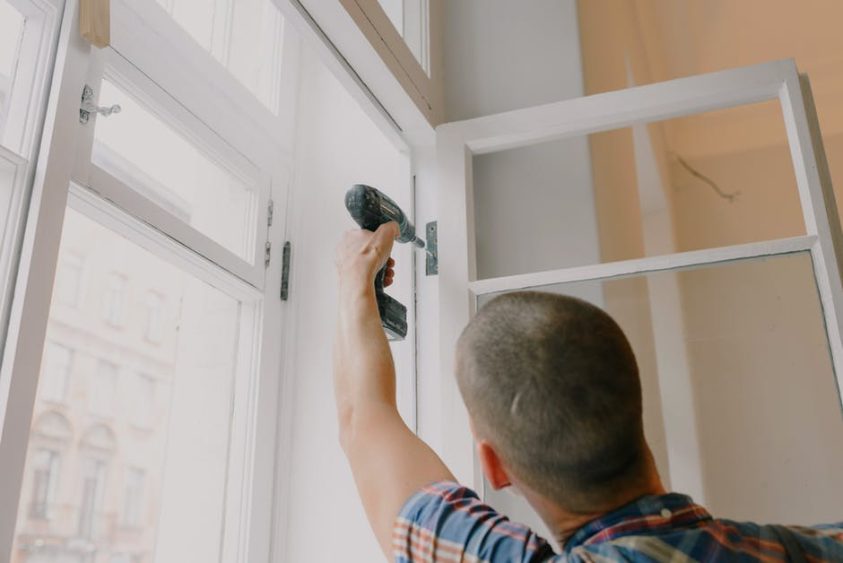
If your energy bills seem to climb every year, your old windows might be part of the problem. Aging, inefficient windows can allow drafts, heat loss, and poor insulation, which forces your HVAC system to work harder to maintain a comfortable indoor temperature. The question is, can new windows help you save on energy costs? The answer is a resounding yes—and here’s why. How New Windows Contribute to Energy Efficiency? How Much Can You Save? While the exact savings depend on factors like your location, the condition of your existing windows, and your home’s insulation, replacing old single-pane windows with Energy Star-rated windows can save you between $125 and $465 annually on energy bills, according to the U.S. Department of Energy. Additional Benefits of New Windows Signs It’s Time for New Windows If you’re unsure whether it’s time to replace your windows, look out for these signs: Choosing the Right Windows At Will County Siding and Windows, we offer a variety of energy-efficient window options to meet your needs and budget. Our experts will guide you through choosing the right styles, materials, and features to maximize energy savings and comfort for your home. Invest in Energy Savings Today Replacing your old windows is an investment that pays off in reduced energy bills, improved home comfort, and a smaller environmental impact. If you’re ready to upgrade your windows and start saving, contact us today for a consultation!
A Quick Comparison of Single, Double, & Triple-Pane Windows

Windows are more than just a view to the outside—they play a vital role in your home’s energy efficiency, noise reduction, and comfort. When choosing new windows, one important consideration is the number of panes: single-, double-, or triple-pane. Each has its unique benefits and drawbacks, and the right choice depends on your priorities, location, and budget. In this guide, we’ll compare single-, double-, and triple-pane windows to help you make an informed decision for your home. What Are Window Panes? Window panes are the layers of glass in a window. The number of panes directly impacts the window’s performance in terms of insulation, soundproofing, and durability. Between the panes of double- or triple-pane windows, insulating gas (such as argon or krypton) is often added to enhance thermal performance. Single-Pane Windows Overview Single-pane windows feature one layer of glass. These windows were standard in older homes but are less common in modern construction due to advancements in energy-efficient technology. Pros Cons Best For Double-Pane Windows Overview Double-pane windows feature two layers of glass with a layer of insulating gas in between. This design makes them significantly more energy-efficient than single-pane windows. Pros Cons Best For Triple-Pane Windows Overview Triple-pane windows feature three layers of glass with two insulating gas layers. They are the most advanced option for insulation and noise reduction. Pros Cons Best For Comparison Table Feature Single-Pane Double-Pane Triple-Pane Energy Efficiency Low Moderate High Noise Reduction Minimal Good Excellent Cost Low Moderate High Weight Lightweight Moderate Heavy Best For Low-priority spaces Most homes Extreme climates Which Option is Right for You? Choosing the right type of window depends on several factors: Final Thoughts Investing in the right windows is crucial for comfort, energy efficiency, and long-term savings. Single-pane windows may suit certain outbuildings, but for most homes, double-pane windows strike the ideal balance between cost and performance. In extreme climates or noisy areas, triple-pane windows offer unparalleled benefits. Still unsure? Consult a window specialist to evaluate your home’s needs and ensure your investment pays off for years to come.
What Causes Foggy Windows Inside Your House?
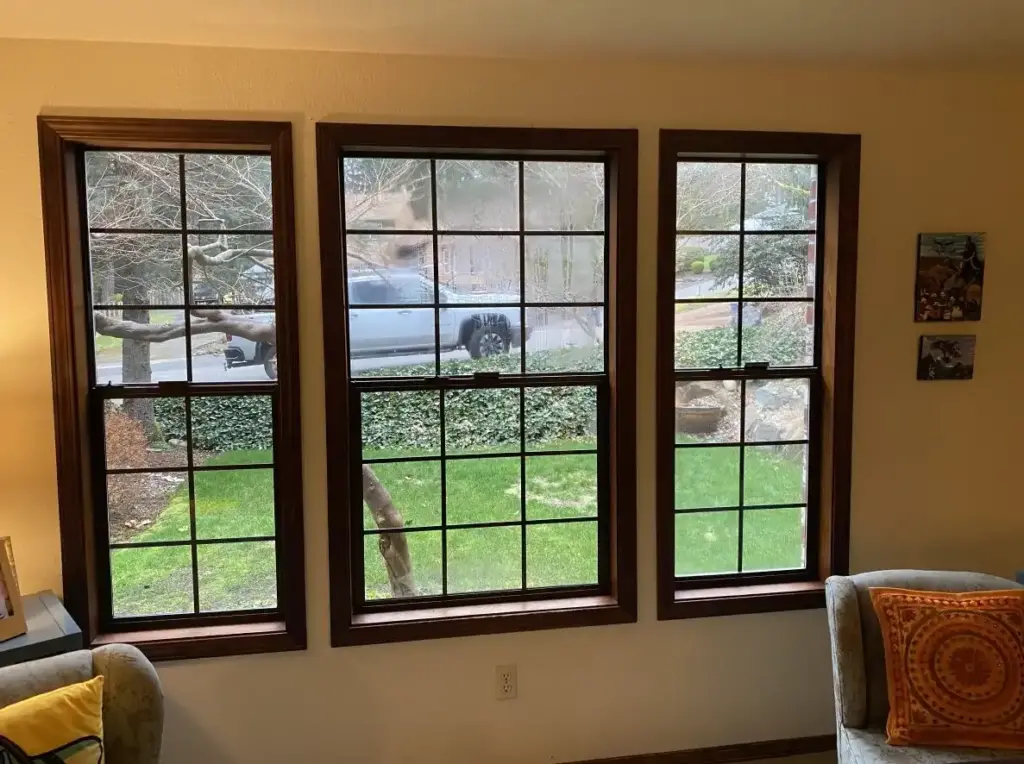
Foggy windows can be a frustrating sight in your home, obscuring your view and making your space feel less inviting. Understanding the causes of this condensation and how to prevent it can help you maintain a clear, comfortable living environment. In this blog post, we’ll explore the reasons behind foggy windows, how to prevent them, and whether foggy windows need replacing. What Causes Foggy Windows? Foggy windows occur when moisture accumulates on the glass surface, resulting in condensation. This condensation can happen for several reasons: 1. High Indoor Humidity One of the primary causes of foggy windows is high humidity levels inside your home. Activities like cooking, showering, and even breathing contribute to the moisture in the air. When warm, moist air comes into contact with the cooler glass surface of your windows, it condenses, leading to foggy glass. 2. Poor Ventilation Inadequate airflow can exacerbate humidity issues. Without proper ventilation, moisture has nowhere to escape, increasing the chances of condensation forming on your windows. Rooms that are often sealed off, such as bathrooms and kitchens, are particularly prone to this problem. 3. Temperature Differences Fogging often occurs when there’s a significant temperature difference between the inside and outside of your home. In colder months, warm air inside can quickly cool down when it meets the cold glass of the window, leading to condensation. 4. Old or Damaged Windows Windows that are old or have damaged seals can be more susceptible to fogging. When the seal fails, moisture can enter the space between the panes, leading to persistent fogginess that can’t be wiped away. 5. Weather Conditions Outdoor weather plays a role as well. High humidity outside or rapid temperature changes can lead to foggy windows indoors, particularly in the early morning or late evening. How to Prevent Foggy Windows? Now that we know what causes foggy windows, let’s explore some effective ways to prevent them: 1. Control Indoor Humidity Keep indoor humidity levels between 30-50%. You can use a dehumidifier to help remove excess moisture, especially in areas prone to high humidity. Additionally, using exhaust fans in kitchens and bathrooms during and after activities that generate moisture can help. 2. Improve Ventilation Ensure your home is well-ventilated. Open windows when weather permits to allow fresh air in. You might also consider installing vents or air exchangers to improve airflow in areas where moisture accumulates. 3. Use Window Treatments Wisely Heavy curtains or shades can trap moisture. Opt for lighter treatments or ensure that they are opened during the day to allow sunlight to warm the windows and reduce condensation. 4. Invest in Quality Windows If your windows are old or damaged, consider upgrading to energy-efficient models. Double-glazed or triple-glazed windows are designed to insulate better, reducing the temperature difference between the inside and outside and minimizing condensation. 5. Regular Maintenance Check the seals on your windows regularly. If you notice any gaps or cracks, repair or replace them to keep moisture from entering the window panes. Regularly clean your windows to help you identify any condensation issues early. 6. Adjust Indoor Temperature Keeping a consistent indoor temperature can help prevent condensation. Avoid drastic changes in temperature, and consider using space heaters in particularly cold rooms to maintain warmth. Do Foggy Windows Need Replacing? If your windows are foggy, it doesn’t always mean they need to be replaced. Here are some considerations to help you decide: When to Consider Replacement Conclusion Foggy windows can be a nuisance, but understanding their causes and implementing preventive measures can keep your home comfortable and visually appealing. By managing humidity, improving ventilation, and maintaining your windows, you can significantly reduce the occurrence of condensation. If fogging persists, assess whether replacement is necessary or if repairs can extend the life of your windows. Enjoy clearer views and a more inviting atmosphere in your home by following these tips!
Comprehensive Guide to Replacing Windows in Older Homes

Replacing windows in older homes can be a rewarding yet challenging endeavor. Whether you’re looking to enhance energy efficiency, improve aesthetics, or increase the value of your property, new windows can significantly impact your home. However, the process of replacing windows in older homes requires careful consideration and planning. Here’s what you can expect during this transformation. 1. Assessing Your Current Windows Before diving into the replacement process, take a close look at your existing windows. Consider the following factors: 2. Choosing the Right Replacement Windows When selecting new windows, you’ll encounter various options, including: 3. Hiring Professionals vs. DIY Replacing windows is a significant project that requires skill and experience. Here’s what to consider: 4. Preparing for the Installation Once you’ve chosen your windows and hired professionals (or decided to go the DIY route), it’s time to prepare for installation: 5. Understanding the Installation Process The window replacement process typically involves the following steps: 6. Post-Installation Care After the installation, it’s essential to take care of your new windows: 7. Benefits of Window Replacement Replacing windows in older homes can bring numerous benefits: Conclusion Replacing windows in older homes is a substantial but worthwhile project. By understanding what to expect during the process—from assessing your current windows to choosing the right replacements—you can make informed decisions that enhance your home’s comfort, beauty, and value. Whether you opt for a professional installation or take on the project yourself, the results will surely be rewarding for years to come.
Choosing the Perfect Window Grid Style for Your Home
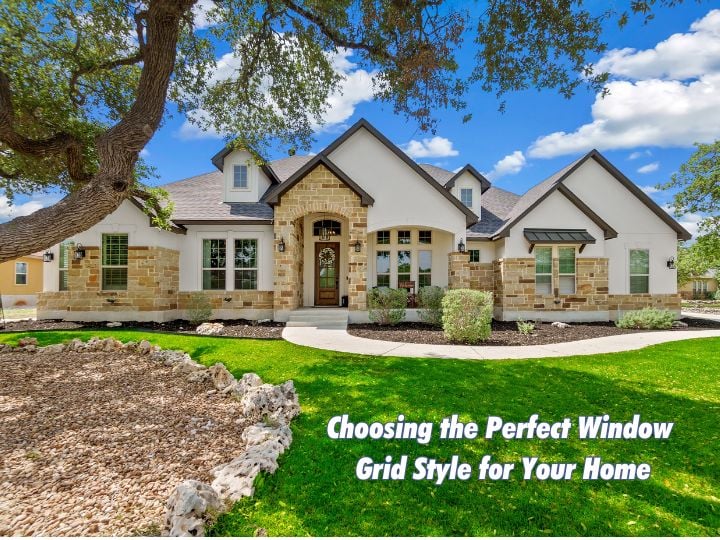
When it comes to home design, windows play a crucial role in not only letting in natural light but also enhancing the overall aesthetic of your space. One of the key elements that can significantly impact the look and feel of your windows is the grid style. With various options available, choosing the right window grid can elevate your home’s architecture and complement your personal style. In this post, we’ll explore different window grid styles and offer tips on how to find the best one for your home. Understanding Window Grids Window grids, also known as grilles or muntins, are the horizontal and vertical bars that divide window panes. They can create a classic, charming appearance or a sleek, modern look, depending on the style you choose. Grids can be installed on the exterior, interior, or even between the glass panes, affecting both aesthetics and maintenance. Popular Window Grid Styles 1. Colonial Grids Colonial grids are characterized by their traditional, symmetrical design, often featuring a rectangular pattern that divides the window into multiple smaller panes. This style is ideal for classic homes, particularly those built in the Colonial or Federal styles, adding a sense of history and elegance. 2. Prairie Grids Prairie grids, inspired by the Arts and Crafts movement, typically feature a more horizontal layout with wide, flat bars. This style emphasizes horizontal lines and can be a perfect match for Craftsman-style homes or bungalows, providing a relaxed and open feel. 3. Modern Grids For contemporary homes, modern grids offer a minimalist look with sleek lines and fewer divisions. These grids often feature large panes of glass with narrow, vertical or horizontal bars, creating a clean, streamlined appearance that allows for maximum natural light. 4. Diamond Grids Diamond grids are often seen in vintage or rustic homes, featuring a diamond pattern that adds a unique and charming touch. This style works beautifully in cottages or historic homes, bringing a sense of whimsy and character to the facade. 5. Custom Grids If you have a specific vision in mind, consider custom grids. This option allows you to design a grid pattern that fits perfectly with your home’s architecture and your personal taste, giving you the freedom to mix and match styles. Tips for Choosing the Right Window Grid Style 1. Consider Your Home’s Architecture The first step in selecting the best window grid style is to assess your home’s architectural design. Look for inspiration in the details of your home, such as moldings, doors, and rooflines. A grid style that complements these elements will create a cohesive look. 2. Think About Functionality Consider the purpose of your windows. If you’re aiming for maximum light and views, a more open grid style may be ideal. For areas where privacy is essential, a more intricate grid design might work better. 3. Match Your Interior Design Don’t forget to think about the interior of your home. Choose a grid style that complements your interior décor, whether it’s modern, rustic, or traditional. Consistency between your interior and exterior design will enhance your home’s overall appeal. 4. Evaluate Maintenance Needs Some grid styles may require more maintenance than others. For example, grids that are placed between the glass panes tend to be easier to clean and maintain, while exterior grids may collect dirt and require more frequent upkeep. 5. Get Professional Advice If you’re unsure about which style to choose, consult with a professional. Window experts can provide guidance based on your home’s design and your personal preferences, helping you make an informed decision. Conclusion Choosing the right window grid style can dramatically enhance the appearance of your home, adding character and charm. By considering your home’s architecture, functionality, and personal style, you can find the perfect grid design that transforms your windows into stunning focal points. Whether you lean towards the traditional Colonial grids or opt for sleek modern styles, the right choice will reflect your unique taste and elevate your home’s overall design. Happy decorating!
How to Install a Leak-Proof Window: A Step-by-Step Guide

Installing a window correctly is crucial to ensuring it performs well and remains leak-proof. A well-sealed window not only enhances the aesthetic appeal of your home but also improves energy efficiency and prevents water damage. In this guide, we’ll walk you through the steps to install a leak-proof window. Step 1: Gather Your Materials Before starting your installation, make sure you have the following tools and materials: Step 2: Measure the Opening Accurate measurements are essential for a proper fit. Measure the width and height of the window opening. If you’re replacing an old window, measure from the inside edge of the frame. Ensure that you have at least a quarter-inch clearance on all sides to accommodate shimming. Step 3: Prepare the Opening Step 4: Apply Waterproof Sealant Before placing the new window, apply a continuous bead of waterproof sealant to the bottom of the window opening. This will create a barrier to prevent water from seeping in. Step 5: Install the Window Step 6: Seal the Edges After securing the window, apply waterproof sealant around the exterior edges where the window meets the frame. This extra layer of protection will help prevent leaks. Step 7: Finish the Interior Inside the home, use trim or casing to finish the window installation. Caulk any gaps between the trim and the wall for a polished look and added protection against air leaks. Why Choose Will County Siding and Windows for Your Installation? While this guide provides a comprehensive overview of the window installation process, many homeowners prefer to leave such tasks to professionals. Here’s how Will County Siding and Windows can help: Get Started Today! If you’re considering a window replacement or installation, trust Will County Siding and Windows for professional results. Visit willcountysidingandwindows.com to learn more about our services, view product offerings, and schedule a consultation. Conclusion Installing a leak-proof window is an essential home improvement project that can save you money on energy bills and protect your home from water damage. By following the steps outlined in this guide, you can achieve a successful installation. However, for those who prefer the peace of mind that comes with professional help, Will County Siding and Windows is just a click away, ready to ensure your windows are installed flawlessly.
Black Windows: A Timeless Trend

Black windows have emerged as a captivating trend in home design, adding a touch of sophistication and modern elegance to any architectural style. Contrary to popular belief, this trend is not a passing fad but rather a timeless choice that complements various design aesthetics. Why Black Windows? Styling Black Windows Considerations In conclusion, black windows are a timeless trend that adds a touch of sophistication and modernity to any home. Their versatility, sophistication, and versatility make them a popular choice for homeowners seeking to elevate their home’s exterior. Whether you have a traditional or contemporary home, black windows can be a stylish and functional addition.
